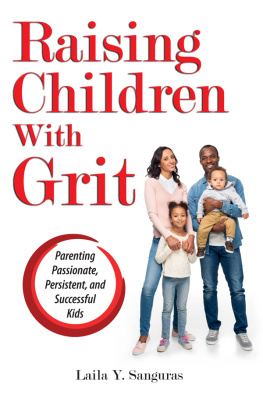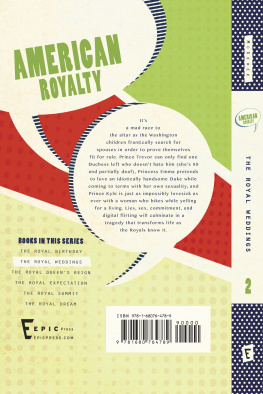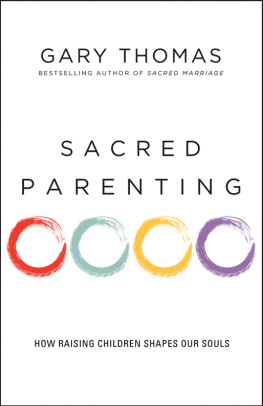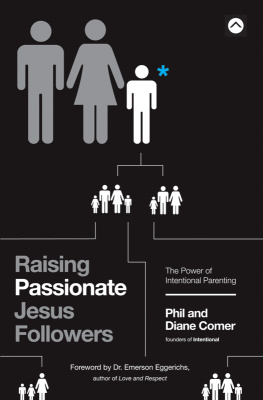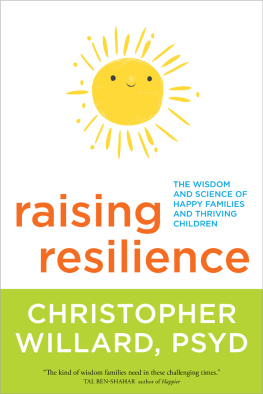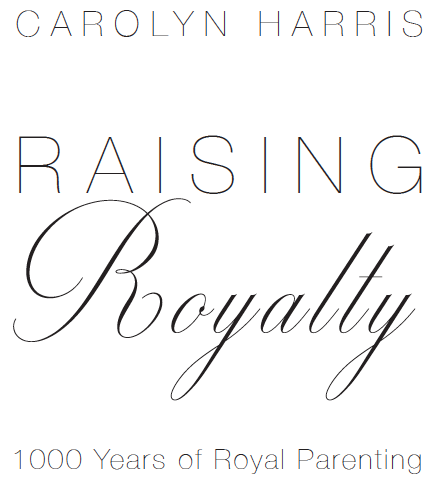INTRODUCTION
Raising a Royal Child
Prince William made his first parenting mistake in the eyes of the world on the day that his son, Prince George, left hospital in July 2013. There had been journalists and photographers camped around the maternity wing of St. Marys hospital in London for weeks leading up to the birth, waiting for the moment when William and his wife Catherine nicknamed Kate by the media the Duke and Duchess of Cambridge, would emerge from the hospital to present their newborn child to the world. Every moment of baby Georges first public appearance was captured on camera to be scrutinized by people around the world on their television screens and online streams. The royal parents received a great deal of praise. William had his sleeves rolled up as though he had just changed a diaper, and Kate wore a fitted dress that did not attempt to disguise her post-pregnancy figure. Even little George appeared to be waving to the crowds from his swaddling clothes.
The criticism came when it was time for William to strap George into his car seat. In previous generations, this kind of task would have been left to a member of the royal household, but William was determined to strap his son into the car and drive his family home like any other new father. Knowing the worlds press would be watching him closely, William reputedly practised assembling the car seat in the privacy of Kensington Palace during the weeks leading up to the birth. Despite these careful preparations, not everything went perfectly on the big day. Within moments of the royal couple and their baby leaving hospital and returning to the palace, parents from all walks of life were posting on internet forums that George had not been properly strapped into his car seat.
On the British childcare blog Baby Centre, an irate commenter posted, If you scroll down to the photos of the baby in the carseat [ sic ] you will see he is not properly strapped in AT ALL!! Very disappointed! Im sure they were in a hurry, and I hope that Kate will fix it once they are in the vehicle as it appeared she was sitting in back with the baby. The commenter included guidelines from the website ChildCarSeats.co.uk to back up her comments. Over at iVillage, online commenters questioned whether a swaddled baby should be in a car seat at all. By the time Georges younger sister, Princess Charlotte, was born in 2015, William seemed to have mastered the car seat but there was a new complaint: the baby princesss bonnet appeared to be on backwards for her first public appearance!
The debate over William and the car seat continued for years after Georges birth. In May 2016, one of the United Kingdoms most prominent etiquette experts, William Hanson, complained that Prince Williams approach to fatherhood was undermining the traditional grandeur, and therefore the future, of the monarchy, writing in the Daily Mail , I want a well-waxed chauffeured Bentley, not Prince William driving mother and latest child home from the hospital in their family car like a regular bloke.
Commentary of this kind is almost unknown in the Commonwealth realms, including Canada, where William and Kate were praised for touring with a small entourage in 2011 and spending time with their children in 2016. When the Canadian edition of Hello! published photographs of William holding George at a garden party at Government House in Victoria, British Columbia, in the autumn of 2016, the coverage included praise of Williams close relationship with his son. Hello! reported that Royal watchers will never forget how he expertly fastened Prince George into the back seat of the car when the tot was just one day old and leaving the hospital. Williams decision to strap his newborn son into a car seat and drive his family home from hospital had transcended popular debates over the nature of good parenting to encompass the public image of the monarchy as an institution.
The monarchy has always been a family affair. Raising Royalty is the story of how twenty royal couples over the past thousand years have navigated the unique challenges of parenting in the public eye. From fending off Vikings to fending off paparazzi, royal mothers and fathers have made decisions for royal children that encompassed their own personal ambitions and the stability of the throne as well as the timeless needs of young children. Over the past ten centuries, royal children have been parented both in country palaces with well-appointed nurseries and in exile far from their birthplaces. As royal parents, William and Kate are following in the footsteps of centuries of kings and queens, princes and princesses, who were mothers and fathers as well as royalty.
The length and definition of childhood has changed over the centuries, shaping the experiences of royal children. Before the Norman Conquest of 1066, a boy was old enough to swear allegiance to the king at the age of twelve, but Richard IIIs nephew, Edward V, was considered too young to rule as king in his own right at that age in 1483. Until the nineteenth century, royal children were often betrothed before they were twelve and married in their early teens to seal diplomatic alliances. The business of ruling was conducted in person by kings and queens who were often away from their children for long periods of time. Even the most devoted royal parents paid little attention to the emotional needs of their children, expecting the obedience of a subject to a sovereign as well as a child to a parent. At a time of high infant mortality, royal parents often expressed their attachment to their children through concern for their health instead of their happiness.
By the late eighteenth century, a new emphasis on natural childrearing resulted in royal mothers such as Queen Marie Antoinette of France creating parenting philosophies that took the individual personalities and emotional needs of their children into account. Older methods of royal parenting, however, proved remarkably resilient. Well into the twentieth century, generations of royal children complained that they saw little of their parents and were expected to obey them without question, even as adults. The public viewed the open displays of affection between Diana, Princess of Wales, and her sons, captured by photographers, as a break from royal tradition. Today, William and Kate emphasize that their children will receive as normal an upbringing as possible, demonstrating that the youngest generation of royal parents recognizes the differences between royal tradition and modern parenting trends.
The intense public scrutiny William and Kate experience as parents seems like a modern phenomenon fuelled by the 24-hour news cycle and ubiquity of online message boards, but for as long as there has been royalty, there has been public scrutiny of royal parenting. For centuries, observers from diverse social backgrounds have expressed advice intended for royal parents. Critiquing royal parenting has also been a way of expressing political dissent. Until the twentieth century, high politics was the preserve of a tiny, predominantly male elite, but everyone had ideas about marriage and childrearing from their own experiences and observations. A royal couple whose marriage and family did not meet popular expectations might find themselves the target of satire in popular verse and pamphlets. If relations between monarchs and their people completely broke down, royalty might find themselves having to defend their parenting as well as their political decisions before parliament or a revolutionary tribunal.





